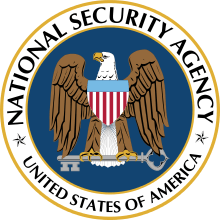Laurence Hugh Frost
| Laurence Hugh Frost | |
|---|---|
 | |
| Born |
July 22, 1902 Fayetteville, Arkansas |
| Died |
May 23, 1977 (aged 74) Portsmouth, Virginia |
| Allegiance |
|
| Service/branch |
|
| Years of service | 1926–1964 |
| Rank |
|
| Commands held |
Greer (DD-145) Manchester (CL-83) Destroyer Flotilla Four Office of Naval Intelligence National Security Agency |
| Battles/wars |
World War II Korean War |
| Awards |
Navy Distinguished Service Medal Silver Star (2) Legion of Merit (2) Bronze Star Medal |
Laurence Hugh Frost (July 22, 1902 – May 23, 1977) was a U.S. admiral who served as Director of Naval Intelligence and Director of the National Security Agency.
Frost graduated from the U.S. Naval Academy in 1926 and served in various ships and shore stations throughout the 1920s and 1930s. He was the commanding officer of Greer (DD-145) when that destroyer was attacked by a German U-boat on 4 September 1941. This was the first attack by Germany on a U.S. warship during World War II and occurred while the U.S. was officially neutral, some three months before America entered the war.
After decorated service in World War II, Frost was assigned to Naval Intelligence and later saw combat as commander of the cruiser Manchester (CL-83) in the Korean War. He was Chief of Staff to Commander First Fleet in 1952. He commanded Destroyer Flotilla Four, Atlantic Fleet in 1955-1956 and was Director of Naval Intelligence from 1956 until 1960. As head of Naval Intelligence he tried to change the U.S. policy on the rebellion in Indonesia.
Frost became director of the National Security Agency in November 1960 with the rank of Vice Admiral. He held this post until 1962. Holding these posts during the beginning of the space race, Frost was involved in early decisions to promote surveillance satellites such as the Navy's ELINT program.
In an effort to reduce tensions, soon after his arrival at NSA, Frost appointed Robert F. Rinehart as chairman of the National Security Agency Scientific Advisory Board specifically because he was the newest member of the board with only a few months' experience and so had fewer "pre-acquired biases" in Rinehart's words. According to the NSA, "In 1962, when Vice Admiral Laurence Frost was unexpectedly transferred from his position..." Gordon Blake was his replacement.
After a final tour of duty at the Potomac River Naval Command, Admiral Frost retired in 1964.
His papers are preserved at the Operational Archives Branch of the Naval Historical Center in Washington, D.C.. He is listed as a rear admiral by the John F. Kennedy Presidential Library which holds an 11-page transcription of an oral interview he gave in 1970. As of 2004 portions of it remain "closed".
| Government offices | ||
|---|---|---|
| Preceded by John A. Samford |
Director of the National Security Agency 1960–1962 |
Succeeded by Gordon A. Blake |
